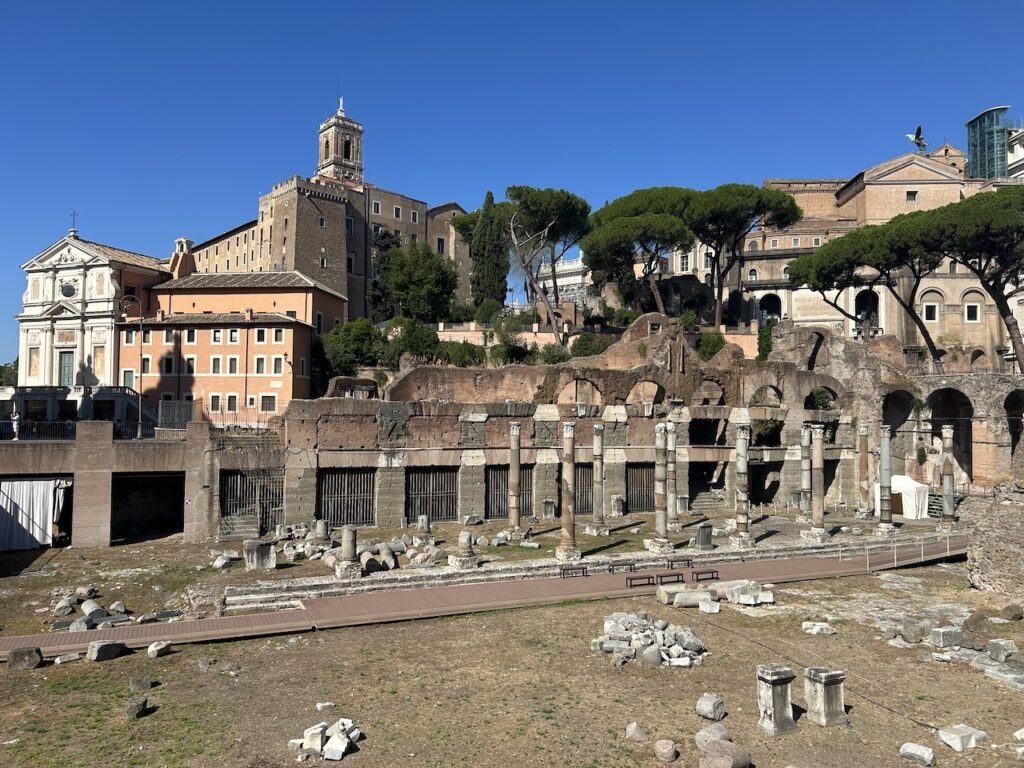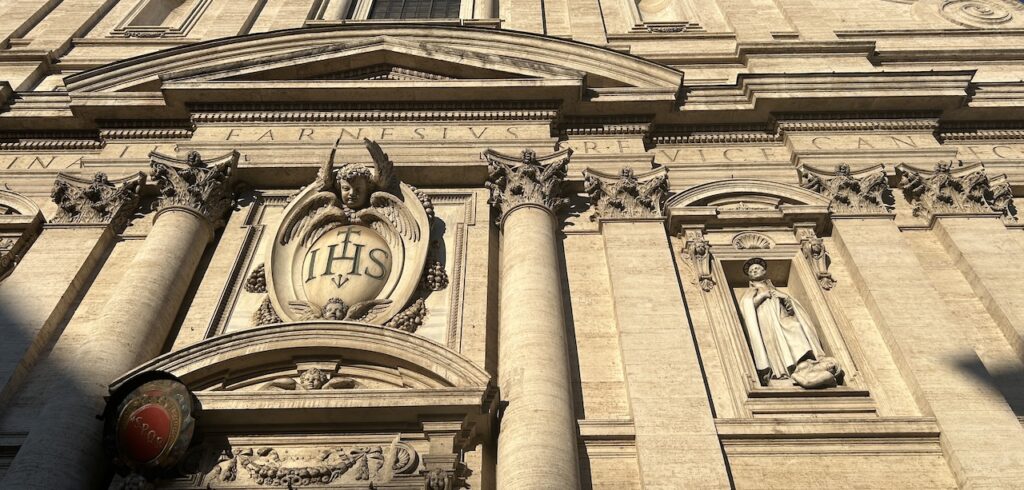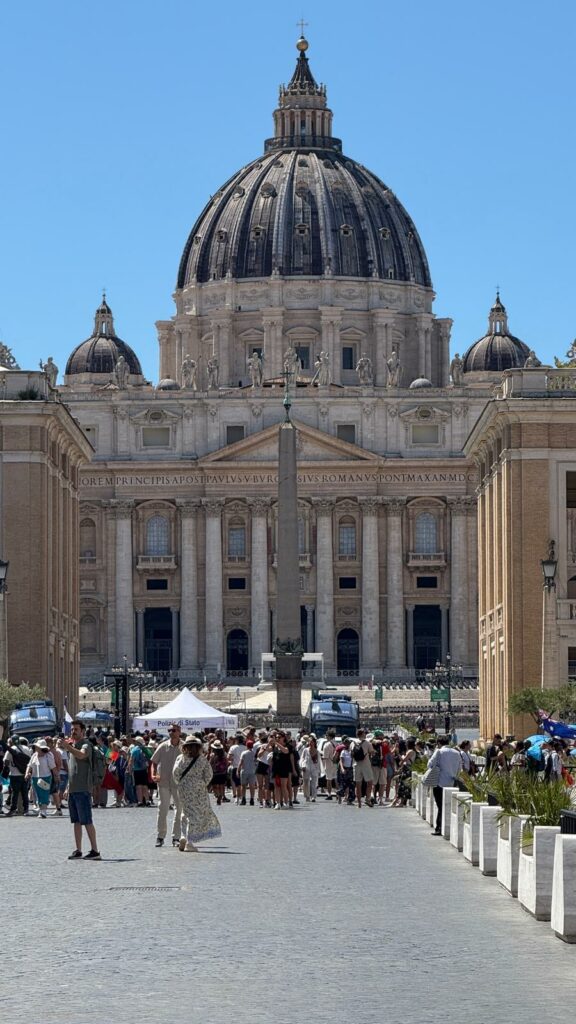Why did Christ send two of His greatest Apostles to Rome? The classic answer is still the best answer: Christ chose to conquer the powerful Roman empire with the weakness of the cross of his many Roman martyrs, including Saint Peter and Saint Paul. In addition, the Greek language and the Roman roads united the Mediterranean world for a singular salvific Gospel to be preached to all peoples.
While that old and standard answer is still simply the best in my opinion, I’m going to propose a secondary reason as to why the most prolific Church was placed in Rome: The Roman Empire conquered physically the way the Roman Church would conquer spiritually: By wisely choosing which hills to die on.
Why Rome?
Despite my love of the Eastern Rites that you may have seen in my writings and videos the last few years, I am a Roman Catholic priest to the core. Part of this may be due to the fact that my mother’s four grandparents were from Ireland. St. Patrick (who obviously brought the faith to Ireland) was not only Roman in his sacraments and theology, but even Roman in his outlook on life and sociology. (Some say he was born a Roman citizen on the island that is now called Britain, but I cannot prove that in this article.)
I have been interested in this question for awhile: What makes the Catholic Church so decisively Roman? Yes, I understand we Catholics have 23 Eastern Rites (and I made a video about them here.) Yes, I even believe that the Christian seats of the Empire (like Antioch and Constantinople) before the East-West Schism of 1054 were capital-C “Catholic” and small-o “orthodox.” (Of course, the Eastern Orthodox today believe all the major Patriarchs before the schism were little-c “catholic” and big-O “Orthodox.”)
But debating the Eastern Orthodox is not the goal of today’s article. I simply want to know why Roman Catholics made the most conversions on six-continents. Could it have something to do with the Roman Empire? Why did Jesus Christ send both Saint Peter and Paul to Rome? Was it just because it was the biggest city in the Mediterranean at the time? Or was there something greater than just size and power that made Our Lord set His sights on sending His two greatest apostles there?
My interest in this topic piqued when I was watching a secular history show about the Roman Empire. I was surprised to find that 500 years before Christ was born, Rome was just a small city-state. In fact, the largest city on the Italian peninsula in 500 BC was Sybaris, a Greek colony in southern Italy (that I had never heard of.)
The documentary I was watching explained that there were numerous competing city states on the Italian peninsula for hundreds of years leading up to the Roman Empire. Why then did the Roman Empire grow to be the largest of ancient history?
Surprisingly, the documentary did not say it had anything to do with geography (as we usually read is the reason for large ancient civilizations.) Rather, the makers of the movie insisted that Rome succeeded in conquering the entire known world for one major reason: The Romans befriended their conquered lands and let them keep any customs not harmful to the Pax Romana.
Amazingly, 2500 years ago, Rome was just another small warring city-state that wasn’t always conquering. But when she was conquering, her strategy was to befriend and assimilate the conquered lands. Rome’s political philosophy of befriend-the-conquered and grant self-rule to the conquered on smaller issues is why she grew to be the most enormous empire when many other Italian cities should have been more likely to grow.

Fast forward to Catholicism. That secular documentary talking about letting conquered lands keep certain customs got me thinking about how Roman Catholics evangelize. We have always used inculturation. Now, I know the knee-jerk reaction you may have to that word “inculturation” if you are a traditional Catholic is to reject it. And you should indeed reject it! Modernists have all turned “inculturation” into nothing but syncretism (the mixing of Catholicism with pagan religions.) Obviously, this is a horrible aspect of the modernists that is found in the most disgusting examples like the recent “Mayan Mass” that was approved by the apostate Vatican just a few years ago.
I’m not talking about that type of inculturation. I’m talking about how true Catholic Apostles, missionaries and saints were able to spread the Gospel of Jesus Christ from Ireland to China while picking their battles in what was important. I’m talking about how (as much as I love the Eastern Rites) they are [rightly] criticized as being ethno-centric today, in both it’s Eastern Catholic way and Eastern Orthodox way.
But we Roman Catholics (at least before Vatican II) had missionaries able to learn all the languages and non-dangerous customs of our targeted missionary lands without compromising on the faith and liturgy. Somehow, our ancestors in the Roman rite were able to “reach across the aisle” (so to speak) on non-critical issues of culture while condemning barbaric and pagan worship (like St. Boniface cutting down the German pagan tree, which obviously got him martyred.) But Germany became Catholic despite (nay, because) of this act. And she got to retain all the good German cultural things that weren’t harmful to Christianity.
All of our greatest Western missionaries not only picked their battles, but even reproduced the seven traditional Roman sacraments and even Thomistic theology in lands as exotic as Mongolia and the Congo. At least, this was what we did before the 1960s.
The Eastern Rites did fine evangelization through the Divine Liturgy. Most of you know the story of how Russia was converted when an emissary of the Emperor sent ambassadors to Muslims and Christians. Those sent to the Christians attended an Eastern Divine Liturgy and returned to the Emperor saying “We didn’t know if we were in heaven or on earth.” That is the religion the Emperor of Russia chose for his kingdom. Imagine that—an entire land converted by a single Eastern Divine Liturgy. (And as I always say on my website, I love the Divine Liturgy as much as the Traditional Latin Mass.)
You will find very few Latin-rite traditional Catholic priests who refrain from East-bashing as much as I do. But even I can admit what I wrote above: The Eastern rites are often in danger of being ethno-centric instead of global in their outreach. How then did we Latin Rite Western priests have a hunger to learn languages all over the globe and to make disciples of all nations? Again, I think it has something to do with Jesus Christ sending St. Peter and Paul to Rome and I think this has just as much to do with Rome’s former strategy as her former size.

Although I will try not to use AI too much in my articles, I asked AI the question: “Of all the cities in Italy why did the Roman empire flourish?” As you read the answers, think not only of the ancient Roman Empire, but think also of all the great Franciscan, Dominican and Jesuit missionaries who came 15 centuries later in the Roman mindset. Ask if they don’t indeed have some link to the ingenuity of the Roman mindset and success at reaching all peoples for Jesus Christ:
– Adaptability: The Romans were adaptable and willing to learn from and adopt elements from other cultures, including military tactics and engineering innovations from the Greeks. (Apply this to spiritual warfare and exorcism.)
– Extension of citizenship: Rome’s offer of partial or full citizenship to conquered peoples, along with allowing local customs and institutions to remain intact as long as they were loyal to Rome, helped integrate diverse populations and foster a sense of shared identity. (Apply this to true inculturation, not modernist inculturation.)
– Roman law: The Roman legal system, rooted in the Twelve Tables, provided a framework for governance, establishing rights, regulating contracts, and guiding interactions between citizens and non-citizens within the growing empire. (Apply this to Canon Law and the Latin language for our seven ancient sacraments.)
– Trade networks: Rome fostered a robust economy based on agriculture and extensive trade networks, facilitated by the construction of roads, ports, and the use of a standardized currency. (Apply this to the miracle of the Roman Catholic Church being the one Church to maintain the same dogma everywhere from the Filioque to contraception, both dropped by the Eastern Orthodox.)
– Public works: Roman engineering prowess allowed them to build impressive infrastructure, including roads, bridges, and aqueducts, supporting military movement, trade, and the needs of a growing urban population. (The Catholic Church obviously built more hospitals and schools than any organization in world history.)
Finally, we’ll close with the example of my favorite saint (not found in the first century) who is St. Francis Xavier. Although St. Francis Xavier never played any of the ridiculous games of post-Conciliar Jesuits with their “inculturation” that is no different from “syncretism” (the mixing of pagan religions and Catholicism that we saw in the Jesuit Bergoglio’s Pachamama event) we know that St. Francis Xavier was able to connect to pagans right where they were in order to bring them the Gospel.

For example, St. Francis Xavier first went to the Emperor of Japan, he was very ecclesiastical… and the mission failed. But on his second trip to Japan, St. Francis met the emperor with a gift of a clock and spoke about science, astronomy, mathematics and even philosophy before coming to the topic of theology. This time, it was a success. It wasn’t because St. Francis compromised one iota on the traditional faith and liturgy of the Roman Church.
St. Francis Xavier knew there was no contradiction between the Gospel of Jesus Christ and the Roman system of Canon Law. In fact, one could easily make the argument that the cookie-cutting system of the Jesuits planting Churches from Peru to Malaysia could have only taken place on the shoulders of an Empire that normalized a singular system of society and law, namely, the ancient Roman Empire. Is this why Christ sent Peter and Paul there? It must be one of the main dozen reasons.
Yet Xavier also understood as a Roman Catholic priest trained under St. Thomas Aquinas that “grace builds on nature without destroying it.” Again, during St. Francis Xavier’s second trip to the royal court in Japan, he first spoke of nature before super-nature. While St. Francis eradicated beastly practices he found on the island (like behavior contra-naturam in a Japanese Buddhist temple) he met them where they were at in things like tea-ceremonies. Of course, he never let such tea-ceremonies enter the Mass as modernist heretics do with numerous items brought into the Novus Ordo.
In any case, we see that St. Francis Xavier was truly Roman: He conquered the Eastern world for Christ but let them maintain the non-harmful beautiful parts of their culture, much as the ancient Roman Empire had done in its secular state. Perhaps this is one reason that the Son of God sent two of His best Apostles to Rome.

Thank you if you’re able to Donate.
